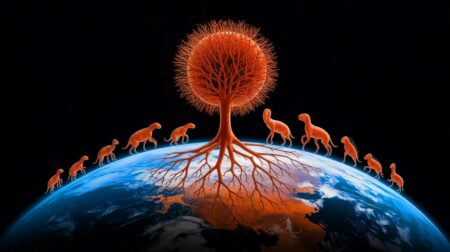Corals worldwide are facing various threats, the most pressing of which is warming water temperatures, which have increased by nearly 1 degree Celsius in many tropical regions over the past century.
Some corals are more resistant than others to thermal stress and so are microscopic algae that live symbiotically with corals, providing them with energy.
In a study undertaken of hundreds of rice coral colonies (Montipora capitata) in Kane’ohe Bay, Hawai’i, scientists from the University of Hawai’i at Mānoa examined two genera of algae, Cladocopium and Durusdinium, that commonly form symbiotic relationships with corals in the Pacific Ocean.
While Cladocopium is widely spread, Durusdinium is usually found in corals in shallow waters exposed to higher levels of sunlight and sea surface temperatures as well as in areas with higher temperature variability. These latter algae are known to have increased resilience to thermal stress.
The scientists wanted to find out if the algae migrated to corals in the face of thermal stress, thereby providing a degree of protection to the corals.
“Coral in the extreme north and extreme south of Kane’ohe Bay hosted less of the stress resilient symbiont,” explains Mariana Rocha de Souza, the lead author of the study and a researcher at the university’s Institute of Marine Biology.
“This makes sense, as these areas experience less light, less warming and less temperature variation. However, we were surprised to see that the symbiont really responded to these fine environmental differences in parts of the bay — something that had not been found in other studies,” she adds.
The new research is providing encouraging insights into natural processes as temperatures continue to rise around Hawai’i and across much of the Pacific Ocean where corals live.
“Our fine-scale sampling of coral colonies across a relatively small spatial gradient within Kane’ohe Bay showed that algal symbiont community structure can respond to the conditions under which the coral is living,” Rocha de Souza says.
“This sets the stage for understanding the role of environmental conditions in shaping how algal communities are distributed in space and time,” she adds. “Understanding the symbionts present in corals in Hawai’i and what is driving the symbiont community composition can help us predict how these corals will respond to future heat stress.”
In 2019 corals in Kane’ohe Bay underwent mass bleaching and the scientists are now investigating how corals with different symbionts from various parts of the bay responded to heat stress.
Did you like it? 4.5/5 (30)








